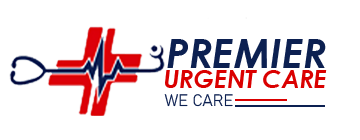
SPINAL STENOSIS

Spinal stenosis doesn’t always cause symptoms. Patients that do have symptoms may experience pain, tingling, numbness, and muscle weakness that worsens over time.
Spinal stenosis in the neck (cervical spine) can cause:
-
Numbness or tingling in the hand, arm, foot, or leg
-
Weakness in the hand, arm, foot, or leg
-
Difficulty walking
-
Balance problems
-
Neck pain
-
In severe cases, bowel or bladder dysfunction (urinary urgency and incontinence)
Spinal stenosis in the lower back (lumbar spine) can cause:
-
Numbness or tingling in the foot or leg
-
Weakness in the foot or leg
-
Pain or cramping in one or both legs when standing for long periods of time or when walking, which usually eases when bending forward or sitting
-
Back pain
-
The condition occurs when something happens to narrow the open space within the spine. Causes of spinal stenosis may include:
-
Overgrowth of bone. Wear and tear caused by osteoarthritis on the vertebrae can lead to the formation of bone spurs, which can grow into the spinal canal. Paget’s disease is another bone disease that can cause bone overgrowth in the spine.
-
Herniated discs. With age, the discs between the vertebrae tend to dry out and become at risk of developing cracks in their exterior. This may allow some of the soft inner material to escape and put pressure on the spinal cord or nerves.
-
Thickened ligaments. The tough cords that help keep the vertebrae together can become stiff and very thick over time. These thickened ligaments can bulge into the spinal canal and cause symptoms of spinal stenosis.
-
Tumors. Abnormal growths can form within the membranes that cover the spinal cord or in the space between the spinal cord and vertebrae. Spinal tumors are uncommon but can be identified with imaging tests.
-
Spinal injuries. Car accidents and other trauma can dislocate or fracture one or more vertebrae, damaging the contents of the spinal canal. Patients may also experience swelling of nearby tissue immediately after back surgery. This can put extra pressure on the spinal cord or nerves.
-
At Premier Urgent Care, patients can experience lasting pain relief and begin their recovery after treatment with injections and pain management techniques.
A few types of joint and soft tissue injections offered at the clinic include nerve blocks, epidural injections, piriformis injections, sacroiliac joint injections, and trigger point injections. Patients should speak to their physician to find out if joint and soft tissue injections could alleviate their symptoms.
Pain management techniques, such as cold and heat therapy, gentle exercise, physical therapy, massage, acupuncture, cognitive behavior therapy, yoga, deep breathing exercises, progressive muscle relaxation, biofeedback, music therapy, and nonsteroidal anti-inflammatory medication, can help reduce symptoms of spinal stenosis.
Patients who need advanced treatment, such as chiropractic adjustment, physical therapy, and even surgery, are encouraged to speak to staff at Premier Urgent Care to learn more about their options.
